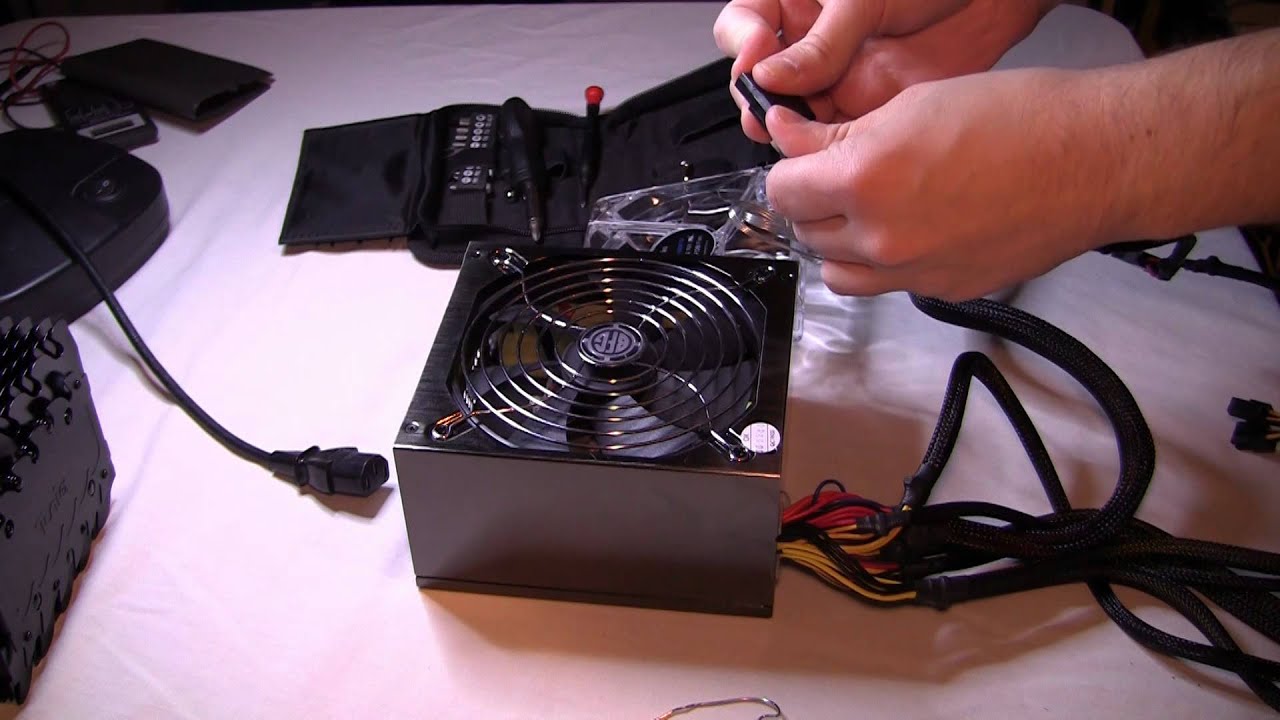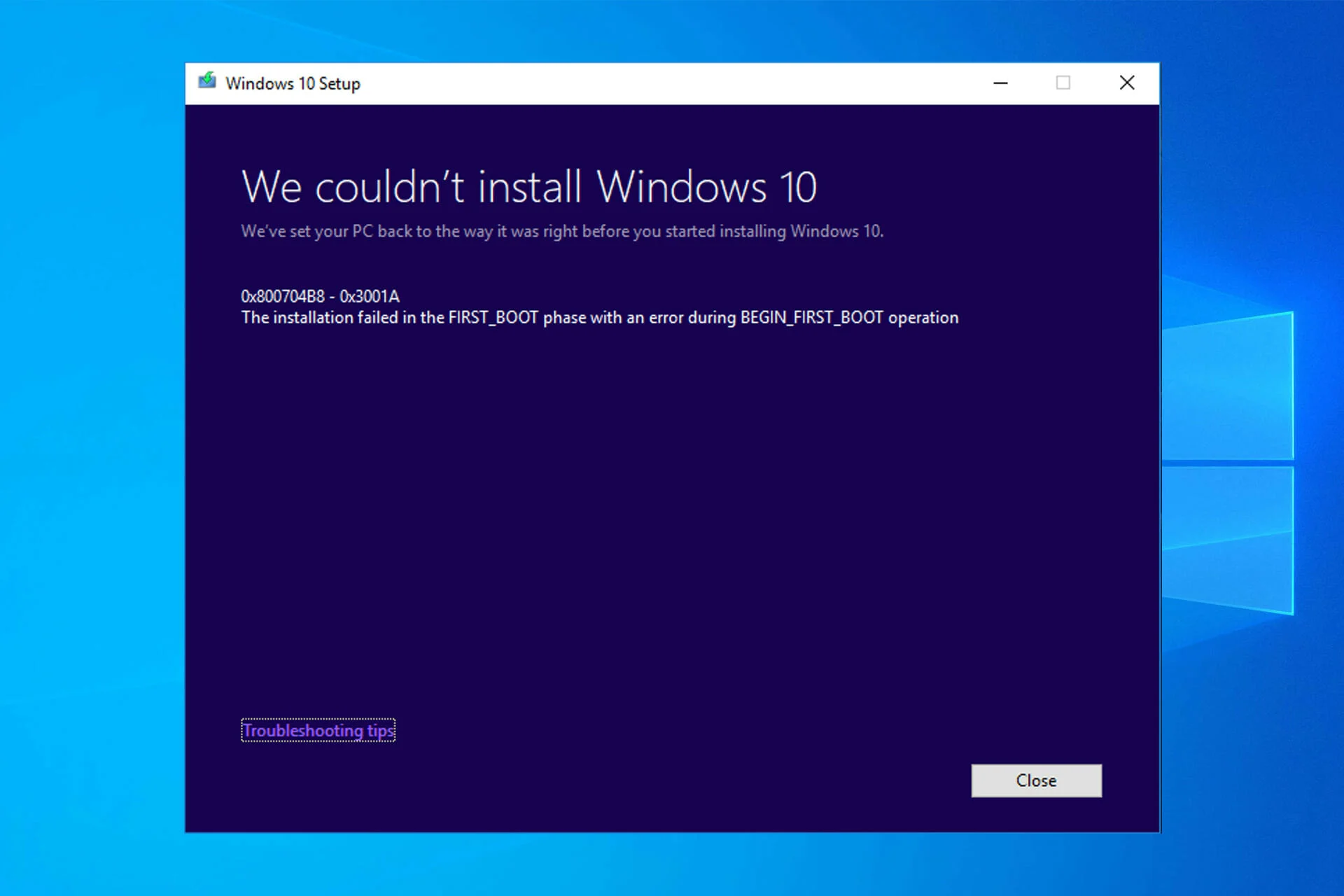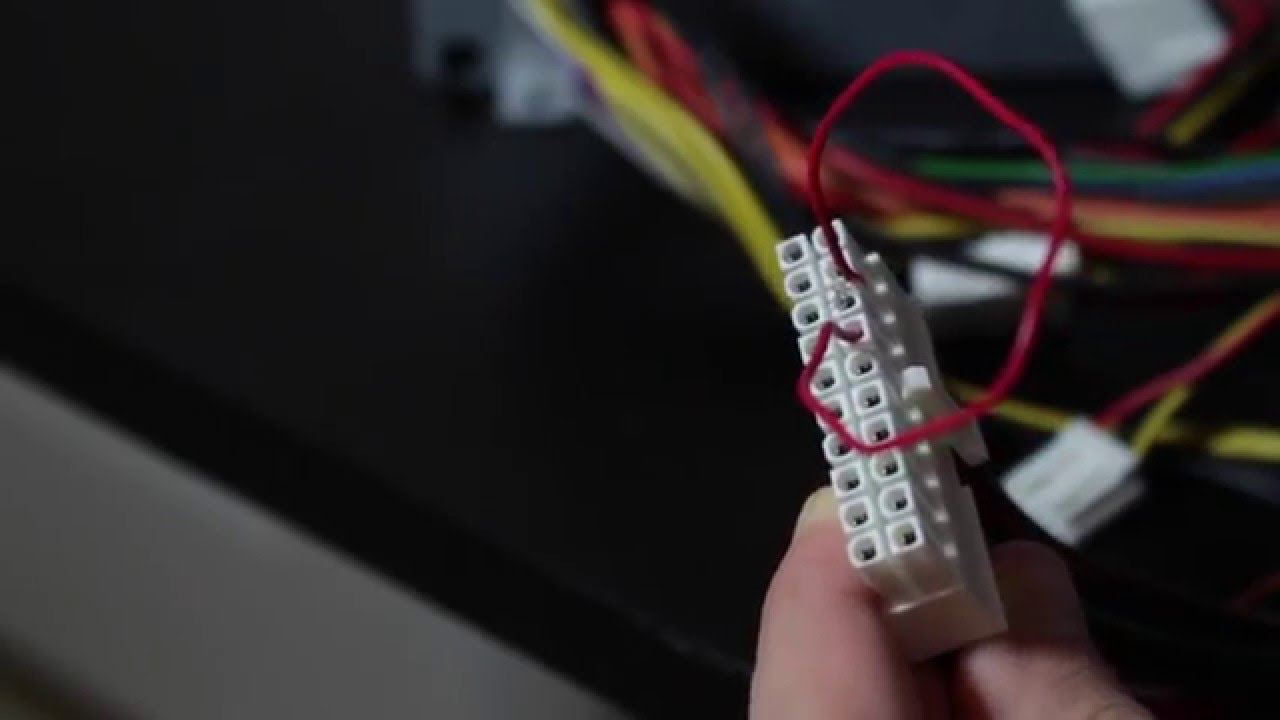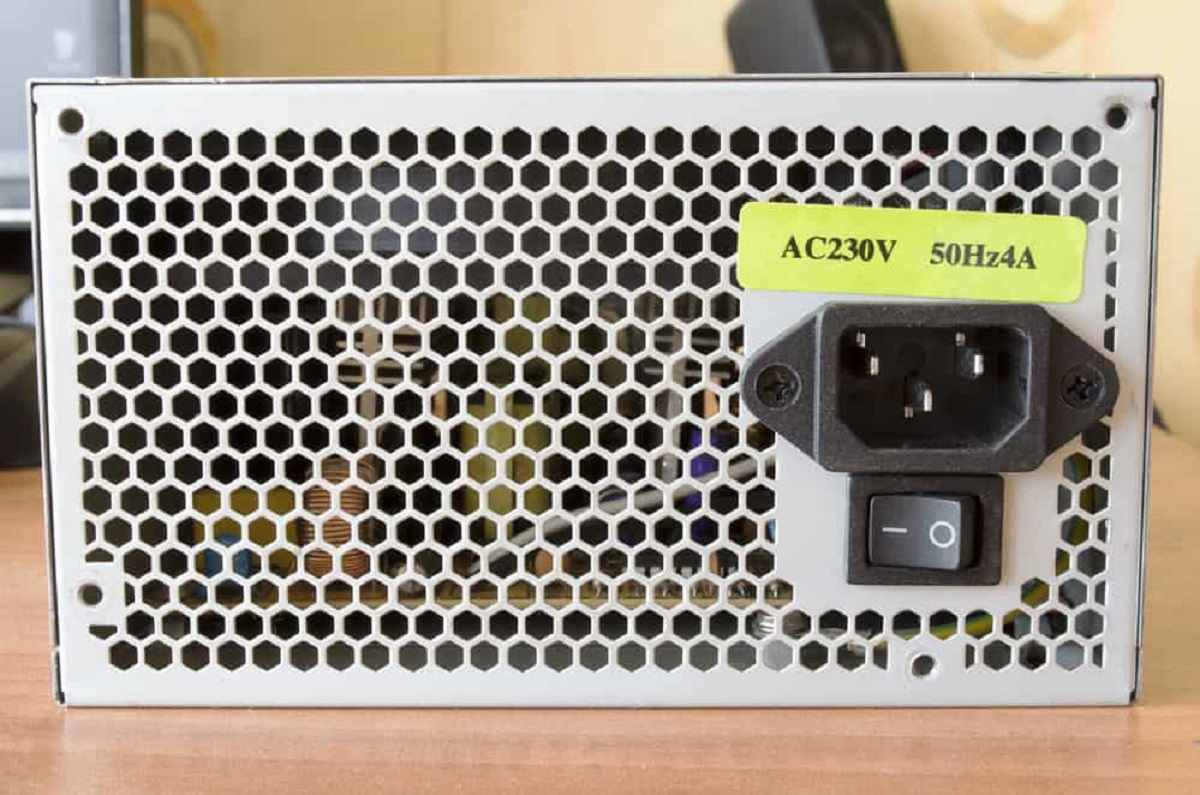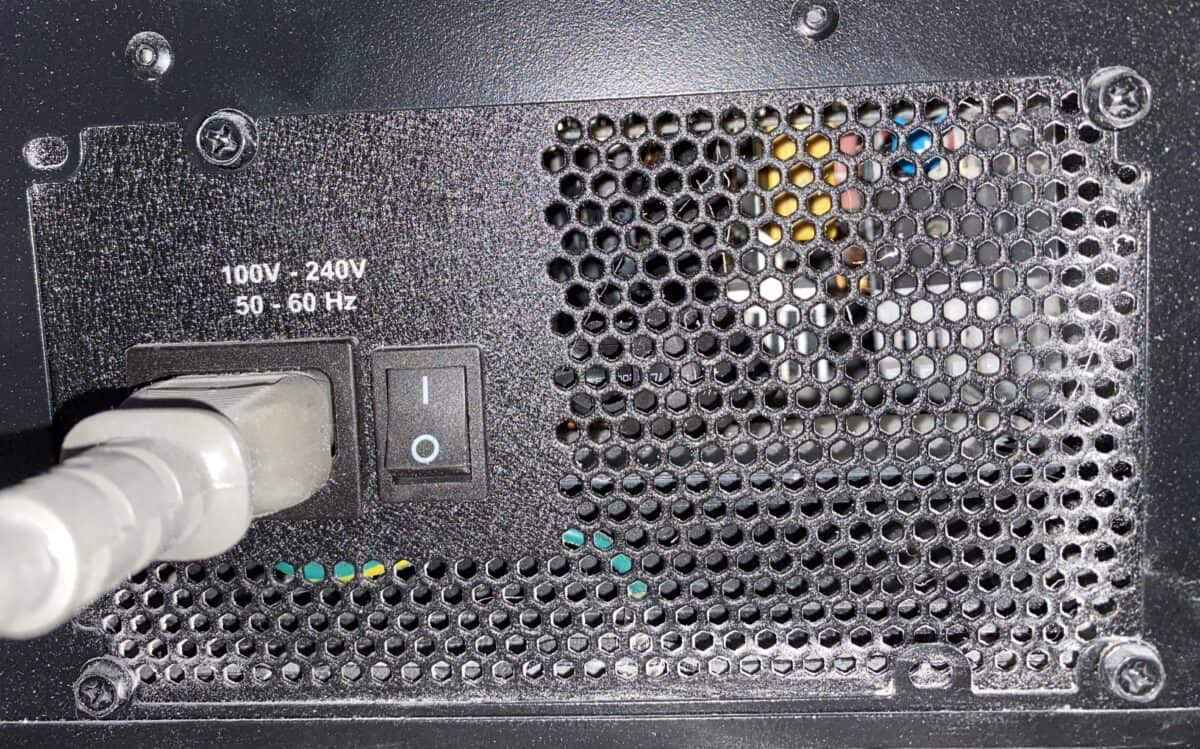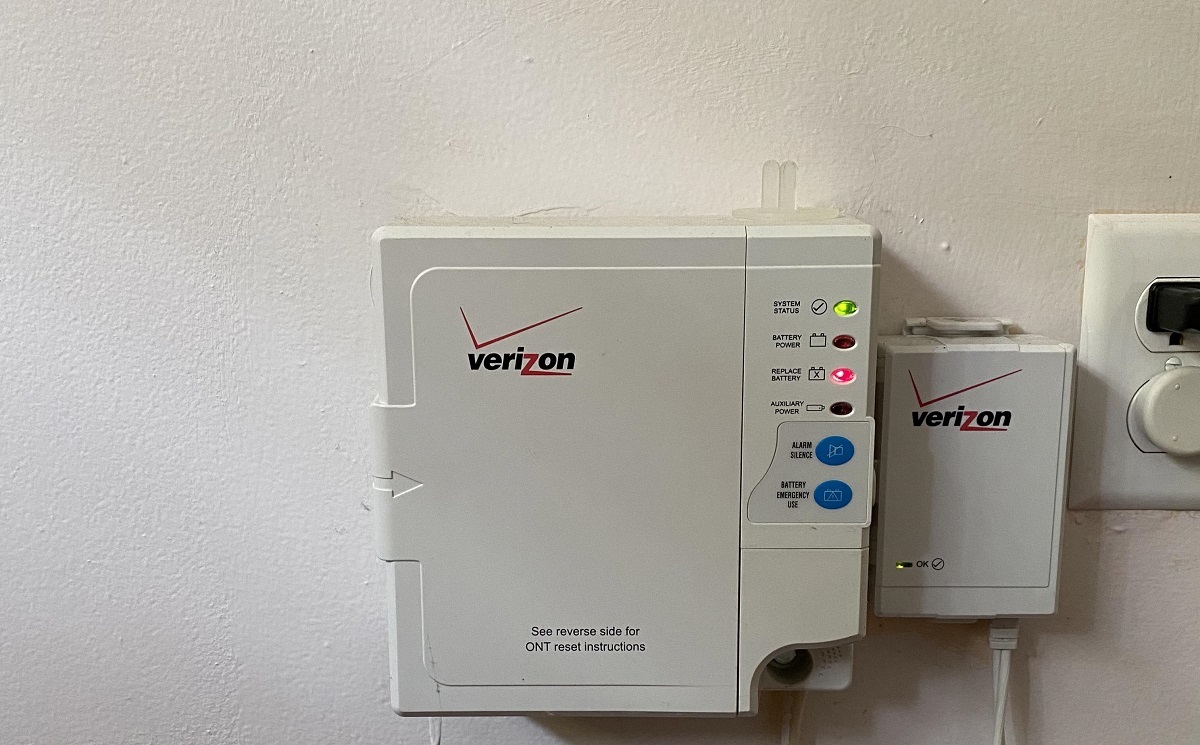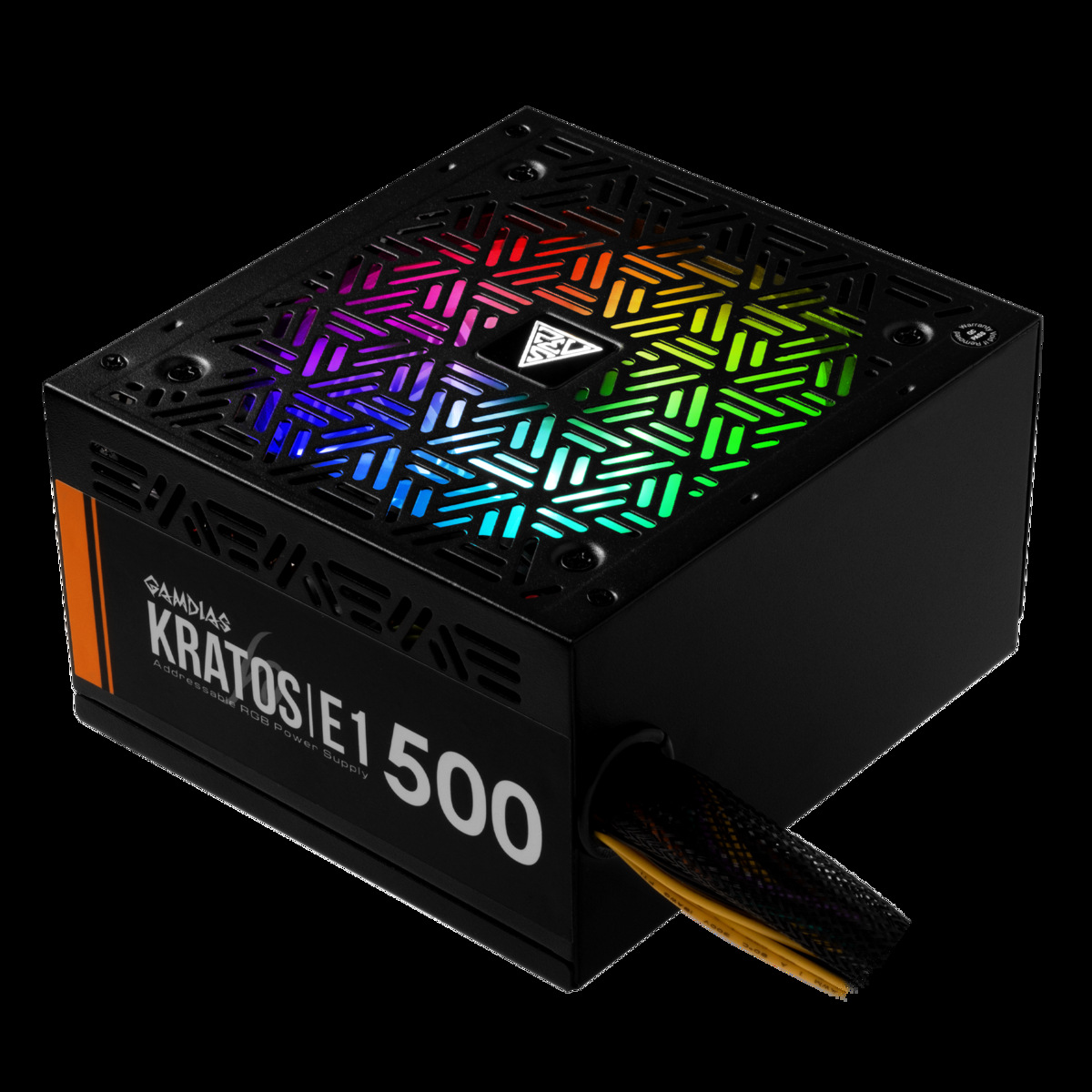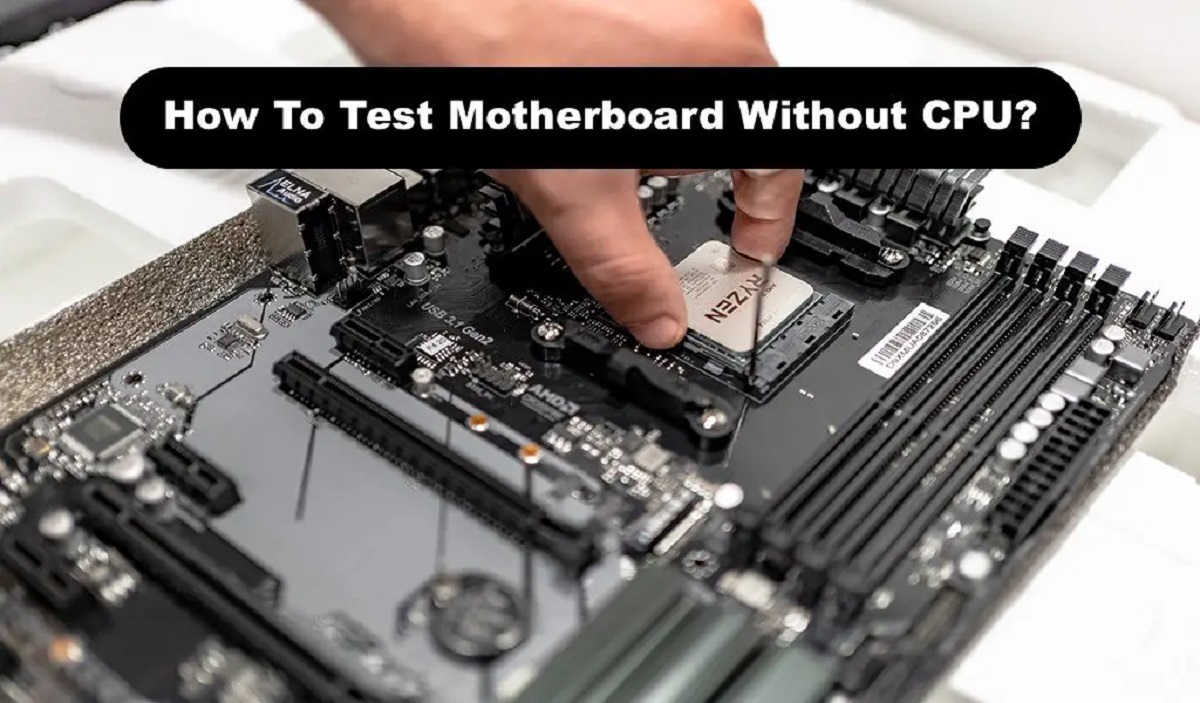Introduction
Your power supply unit (PSU) is a vital component of your computer system. It provides the necessary electrical power to all the other components, ensuring their proper functioning. However, there may be instances when your PSU fails to work, leaving you frustrated and wondering what went wrong.
Understanding the basics of a power supply unit and knowing how to troubleshoot common problems can save you time and money. In this article, we will explore some of the reasons why your PSU may not be working and discuss steps you can take to resolve the issue.
It’s important to remember that troubleshooting a power supply issue can vary depending on the specific symptoms you are experiencing and the type of computer system you have. However, by following general troubleshooting guidelines and identifying common signs of a PSU problem, you can narrow down the potential causes and find a solution.
Whether you are a seasoned computer enthusiast or a beginner, this guide will provide you with valuable insights and practical tips to get your power supply up and running again.
Power Supply Basics
Before diving into troubleshooting steps, it’s important to understand the basic functions and components of a power supply unit (PSU). A PSU is responsible for converting the alternating current (AC) power from your wall outlet into direct current (DC) power that your computer components require.
Inside the PSU, you’ll find several key components, such as:
- The transformer: This component converts the high-voltage AC power from the wall outlet into a lower-voltage AC power.
- The rectifier: It converts the AC power into DC power by utilizing diodes.
- The capacitors: These store electrical energy and provide stability to the voltage output.
- The voltage regulator: It ensures a consistent output voltage to the computer components.
- The fan: It keeps the PSU cool by dissipating heat generated during operation.
Power supplies come in different wattages and form factors, so ensure to choose one that meets the power requirements of your computer system. It’s essential to check the total power consumption of your components and choose a PSU with sufficient wattage to prevent overloading and potential damage.
Additionally, modern power supplies often come with various certifications, such as 80 PLUS, which indicate their efficiency ratings. Higher efficiency power supplies not only save energy but also produce less heat, which can prolong the lifespan of your components.
Understanding the basic inner workings of a power supply unit will help you better troubleshoot any issues you encounter. Now, let’s move on to identifying the common signs that may indicate a problem with your PSU.
Common Signs of a PSU Problem
Identifying the signs of a PSU problem is crucial in order to accurately diagnose and resolve the issue. Here are some common indicators that your power supply unit may be malfunctioning:
- No power: The most obvious sign is when your computer fails to power on or doesn’t respond when you press the power button. This could be due to a faulty PSU.
- Intermittent shutdowns: If your computer randomly shuts down and restarts or experiences sudden system crashes, it could be a result of an unstable power supply.
- Overheating: A failing PSU can cause overheating issues in your computer. If you notice excessive heat buildup or your system becomes increasingly noisy, it’s worth investigating the power supply unit.
- Unstable voltages: Fluctuating or inconsistent voltages can lead to hardware failures and system instability. Keep an eye out for random reboots, screen flickering, or unusual errors.
- Burning smell or unusual noises: If you detect a burning odor coming from your computer or hear strange clicking, grinding, or buzzing sounds, it may indicate a hardware problem, potentially with the PSU.
It’s important to note that these signs can also be caused by other issues, such as faulty motherboard components or overheating graphics cards. Therefore, it is essential to thoroughly troubleshoot your system before determining whether the PSU is the culprit.
Now that you are aware of the common signs of a power supply problem, let’s proceed to the next section, where we will explore the troubleshooting steps to identify and resolve PSU issues.
Troubleshooting Steps
When you encounter issues with your power supply, following a systematic troubleshooting approach will help you pinpoint the cause of the problem and find a solution. Here are some steps you can take to troubleshoot PSU issues:
- Check the power connection: Ensure that the power cable is securely plugged into both the PSU and the wall outlet. Sometimes, loose connections can cause power failures or intermittent shutdowns.
- Inspect for physical damage: Carefully examine the power supply unit for any signs of physical damage, such as frayed cables, bulging capacitors, or burnt components. If you notice any, it’s likely that the PSU needs to be replaced.
- Switch power outlets: Try plugging the power supply into a different wall outlet to rule out any issues with the power source. Faulty electrical wiring or power surges can affect the performance of your PSU.
- Disconnect peripherals: Unplug any unnecessary peripherals, such as external hard drives or USB devices, and see if the PSU problem persists. Sometimes, a faulty peripheral can overload the power supply.
- Test with a different PSU: If possible, borrow a known-working power supply unit from a friend or colleague and test it with your computer system. This can help determine if the issue lies with the PSU or another component.
- Check for overheating: Inspect the cooling fans in your PSU to ensure they are functioning properly. Excessive heat can cause the PSU to shut down. Clean any accumulated dust or debris in the fans and surrounding areas to improve airflow.
- Reset BIOS settings: In some cases, incorrect BIOS settings can cause power-related issues. Resetting the BIOS to default settings can help resolve the problem. Consult your motherboard’s manual for instructions on how to do this.
- Seek professional help: If you have exhausted all troubleshooting steps and are still experiencing PSU issues, it may be time to consult a professional technician. They can diagnose the problem accurately and provide appropriate solutions.
By following these troubleshooting steps, you can often identify and resolve power supply issues on your own. However, if you are unsure or uncomfortable working with hardware components, it’s always best to seek professional assistance.
In the next section, we will discuss some of the specific problems that can cause a power supply to malfunction, and how to address them.
Non-functional Power Supply
A non-functional power supply is one of the most common reasons your computer fails to turn on. If you have ruled out other potential causes and determined that the PSU is the culprit, here are some steps you can take to address the issue:
- Double-check connections: Make sure all cables connecting the PSU to the motherboard, CPU, and peripherals are securely plugged in. Sometimes, loose connections can prevent the power supply from functioning properly.
- Perform the paperclip test: This test helps determine whether the power supply unit is capable of providing power. Disconnect the PSU cables from your computer components and insert one end of a paperclip into the green wire pin of the 20/24-pin ATX connector and the other end into any black wire pin. Plug in the power cable and switch on the PSU. If the PSU fan spins, it indicates that the PSU is functional, and the problem lies elsewhere in your system.
- Check for blown fuses or capacitors: Inspect the power supply for any blown fuses or visibly damaged capacitors. If you find any, the power supply unit may need to be replaced. Blown fuses can occur due to power surges or faulty electrical wiring, while damaged capacitors can result from age or manufacturing defects.
- Replace the power supply unit: If you have ruled out all other possibilities and the power supply is confirmed to be malfunctioning, it’s time to replace it. Ensure that you choose a high-quality PSU with sufficient wattage to meet your system’s power requirements.
It’s worth noting that opening and working inside a power supply unit should only be done by experienced individuals with knowledge of electrical components and safety precautions. If you are uncertain or uncomfortable, it’s best to seek professional assistance.
Now that we’ve explored non-functional power supply units, let’s move on to the next section, which covers improper installation as a potential cause for PSU problems.
Improper Installation
Improper installation of a power supply unit (PSU) can lead to a variety of issues and may prevent your computer from functioning correctly. Here are some common installation mistakes and how to avoid them:
- Inadequate power connections: Ensure that all power connections from the PSU to the motherboard, graphics card, and other components are properly seated. Double-check that the cables are fully inserted and secured in the corresponding connectors. Loose connections can cause intermittent power failures or prevent the system from booting up entirely.
- Incorrect wattage: It’s essential to choose a power supply with the appropriate wattage for your computer’s power requirements. If the PSU wattage is too low, it may not be able to provide enough power to all the components, resulting in system instability or shutdowns. Refer to your component manuals or use an online power supply calculator to determine the required wattage for your system.
- Grounding issues: For proper electrical grounding, ensure that the power supply is securely grounded to the computer case. This grounding connection helps protect your components from electrostatic discharge (ESD) and prevents potential damage. Make sure all screws securing the PSU to the case are tightened.
- Improper cable management: Avoid excessive cable clutter by neatly organizing and routing the cables inside the computer case. Poor cable management can obstruct airflow and cause overheating issues. Use cable ties or velcro straps to secure and group cables together, keeping them away from fans and other components.
- Using incompatible connectors: Different power supply units and motherboards use various connector types. Ensure that the PSU connectors match the motherboard’s corresponding ports. Using incompatible connectors can prevent the system from powering on or lead to other compatibility issues.
Taking the time to properly install your power supply can save you from potential headaches and system failures later on. If you are uncertain about the installation process, refer to the manuals of your specific components or consult with a knowledgeable technician.
In the next section, we will explore overheating and fan issues, which can also affect the performance of your power supply unit.
Overheating and Fan Issues
Overheating is a common problem that can affect the performance and reliability of a power supply unit (PSU). Excessive heat can cause components to degrade or fail prematurely. Here are some overheating and fan issues to be aware of and how to address them:
- Blocked or obstructed ventilation: Ensure that the power supply unit has proper airflow and is not obstructed by dust, cables, or other components. Clear any obstructions and clean the PSU vents and fan using compressed air or a soft brush to remove accumulated dust and debris.
- Fan failure: A malfunctioning fan or a fan that is not spinning at the proper speed can lead to overheating. Check if the PSU fan is working by visually inspecting it while the system is powered on. If the fan is not spinning or is making unusual noises, it may need to be replaced.
- Upgrading outdated fans: Older power supply models may come with less efficient or noisy fans. Consider upgrading to a newer PSU model with improved fan technology. Look for power supplies that feature quieter fans, efficient cooling systems, or even fanless designs.
- Improper ventilation in the computer case: The overall airflow within your computer case can affect the cooling efficiency of the PSU. Ensure that your computer case has proper ventilation and fans to help dissipate heat effectively. Place the computer in a well-ventilated area and avoid covering the case or blocking air vents.
- Monitor temperature levels: Use software utilities or BIOS settings to monitor the temperature of your power supply and other components. If the PSU temperature rises excessively, it may indicate a cooling problem or inadequate airflow. Consider adding additional case fans or implementing liquid cooling solutions if necessary.
In summary, maintaining optimal cooling and preventing overheating issues in your power supply unit is crucial for its longevity and performance. Regularly cleaning your computer, ensuring proper airflow, and addressing fan issues promptly can help mitigate overheating problems.
Next, we will discuss power surges and electrical problems as potential causes of PSU issues.
Power Surges and Electrical Problems
Power surges and electrical problems can wreak havoc on your power supply unit (PSU) and other computer components. Sudden voltage spikes or fluctuations can cause irreparable damage to sensitive electronics. Here are some power surge and electrical issues to be aware of and how to protect your PSU:
- Invest in a surge protector: Plugging your computer and peripherals into a surge protector can help safeguard against sudden voltage spikes. Surge protectors act as a buffer, diverting excess electrical energy away from your devices. Make sure to choose a surge protector with sufficient capacity to handle the power requirements of your equipment.
- Use a voltage regulator: A voltage regulator not only protects against power surges but also helps regulate the voltage supplied to your computer components. This can be especially useful in regions with unstable or fluctuating power supplies.
- Avoid overloading power outlets: Plugging too many devices into a single power outlet can overload the circuit and increase the risk of power issues. Spread out your devices across multiple outlets or use extension cords to distribute the load evenly.
- Address electrical issues: Check for faulty wiring or inadequate grounding in your electrical system. Poorly installed or outdated electrical circuits can cause power fluctuations and damage your PSU. If you suspect electrical problems, consult a qualified electrician to assess and resolve the issue.
- Turn off during electrical storms: Thunderstorms can bring about power surges and lightning strikes, which pose a significant risk to your computer equipment. To protect your PSU and other electronics, it’s advisable to shut down and unplug your devices during severe weather conditions.
Protecting your power supply from power surges and electrical problems is vital to ensure its longevity and prevent damage to other components. Implementing measures, such as surge protectors and voltage regulators, and being mindful of electrical safety practices can help safeguard your PSU from potential issues.
Up next, we will discuss compatibility issues that can affect the functionality of your power supply unit.
Compatibility Issues
Compatibility issues can arise between your power supply unit (PSU) and other components in your computer system. Incompatibilities can manifest in various ways, such as power supply form factor mismatches or insufficient cable connectors. Here are some common compatibility issues and how to address them:
- Form factor mismatch: Ensure that the form factor of your power supply unit matches the case you are using. Common PSU form factors include ATX, Micro ATX, and Mini ITX. Use the appropriate PSU form factor that fits your case’s specifications to ensure proper installation.
- Inadequate cable connectors: Check if your PSU provides the necessary connectors for your system’s components. Ensure that you have enough SATA power connectors, PCIe connectors, and any other specific connectors required by your graphics card or storage devices. If the PSU lacks the appropriate connectors, you may need to upgrade to a more suitable power supply.
- Insufficient wattage: If you are experiencing frequent system crashes or unexpected shutdowns, it could be a result of the power supply lacking sufficient wattage to meet the demands of your components. Refer to your component manuals or use an online power supply calculator to determine the required wattage. Upgrading to a higher-wattage PSU can resolve this issue.
- Modular vs. non-modular: Modular power supplies allow you to detach unused cables, resulting in improved cable management. However, it’s important to ensure that the modular connectors are securely plugged into the PSU and the components. Loose connections can cause intermittent power failures or system instability.
- System upgrades: When upgrading components, such as adding a more powerful graphics card or additional storage drives, ensure that your power supply can handle the increased power demands. Check the minimum/recommended power supply requirements for the new components and make adjustments if necessary.
Compatibility issues can be frustrating, but with careful consideration and planning, you can ensure that your power supply is well-suited to your system’s requirements. Take the time to research and verify compatibility before purchasing or installing new components.
In the next section, we will explore how to test the power supply unit to determine if it is functioning correctly.
Testing the Power Supply
Testing your power supply unit (PSU) is an essential step in determining if it is functioning correctly. Here are some methods you can use to test your PSU:
- PSU tester: A PSU tester is a handy tool that allows you to check the voltage outputs of your power supply. Simply plug the tester into the PSU connectors and observe the readings on the display. It will indicate if the different voltage rails, such as +12V, +5V, and +3.3V, are within acceptable limits. Keep in mind that a PSU tester only provides basic information and cannot diagnose all potential issues.
- Multimeter: If you don’t have a PSU tester, you can use a multimeter to measure the voltage outputs of your PSU. Set the multimeter to the DC voltage range and connect the probes to the appropriate PSU connectors. Refer to the manufacturer’s specifications to ensure that the voltages are within the specified ranges. Be cautious and follow proper safety precautions while using a multimeter.
- Swap with a known-working PSU: If possible, borrow a known-working power supply from a friend or colleague and replace your PSU temporarily. Connect the borrowed PSU to your system and check if the issues you were experiencing are resolved. If they are, it indicates that your original PSU is most likely faulty.
- Professional testing: If you are uncertain about performing the tests yourself or suspect complex issues with your PSU, seeking the assistance of a professional technician or bringing your computer to a reputable repair shop can provide more accurate diagnosis and testing.
Testing your power supply can help validate its functionality and determine if it is the cause of any issues you are experiencing. If your tests indicate a faulty power supply, it’s time to consider replacing it with a new one that matches your system’s specifications and power requirements.
In the final section, we will discuss some preventive measures you can take to avoid future power supply failures.
Preventing Future Power Supply Failures
Power supply unit (PSU) failures can be frustrating and disruptive. However, there are preventive measures you can take to minimize the risk of future power supply issues. Here are some tips to help you avoid PSU failures:
- Invest in a high-quality power supply: Choose a power supply from a reputable manufacturer known for producing reliable and efficient PSUs. Look for certifications like 80 PLUS, which indicate higher energy efficiency.
- Provide proper cooling and ventilation: Ensure that your computer case has proper airflow and ventilation. Use case fans to improve cooling and prevent heat buildup around the PSU.
- Keep your computer clean: Regularly clean your computer case and components, including the power supply, to remove dust and debris. Use compressed air or a soft brush to gently clean the PSU vents and fan.
- Use a surge protector: Protect your computer and PSU from power surges by plugging them into a surge protector. This helps prevent damage from sudden voltage spikes.
- Monitor voltage stability: Utilize software utilities or hardware monitoring tools to keep an eye on the voltages supplied by your PSU. Any significant fluctuations or irregularities should be investigated.
- Update firmware and drivers: Keep your computer’s firmware and device drivers up to date. Outdated firmware and drivers can cause compatibility issues and may put unnecessary strain on the power supply.
- Upgrade and maintain adequate wattage: If you plan on upgrading your computer components, ensure that your power supply has sufficient wattage to meet the increased power demands. Regularly check the power requirements of your system and upgrade the PSU if necessary.
- Follow proper installation guidelines: When installing or replacing a power supply, carefully follow the manufacturer’s guidelines and ensure all connections are secure. Improper installation can lead to various issues and potentially damage the PSU or other components.
By implementing these preventive measures, you can prolong the lifespan of your PSU and reduce the likelihood of future power supply failures. Remember to prioritize regular maintenance and keep an eye on any warning signs or changes in your computer’s performance.
We’ve covered various aspects of power supply troubleshooting, issues, and prevention. By following these guidelines and being diligent in maintaining your power supply, you can ensure a reliable and stable power source for your computer system.
Conclusion
A functional power supply unit (PSU) is essential for the proper operation of your computer system. Understanding the basics of PSU functionality, common signs of power supply problems, and troubleshooting methods can help you diagnose and resolve issues efficiently. From non-functional power supplies to improper installation, overheating, power surges, compatibility issues, and more, we have explored a range of potential problems and provided tips to address them.
Regularly testing the power supply, maintaining adequate cooling and ventilation, using surge protectors, and following proper installation guidelines can prevent future power supply failures. By taking these preventive measures, you can ensure the longevity and reliability of your PSU.
Remember, if you are not confident in performing troubleshooting steps or if you encounter complex issues, it is always best to seek professional assistance from qualified technicians.
With the knowledge gained from this guide, you can confidently tackle power supply issues, minimize downtime, and keep your computer system running smoothly. By prioritizing the health and maintenance of your power supply, you are investing in the long-term stability and performance of your entire computer setup.
Stay proactive, keep your power supply clean, monitor its performance, and be mindful of any warning signs. By doing so, you can ensure that your power supply remains a reliable and efficient component of your computer system.







